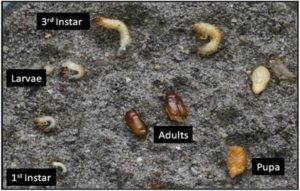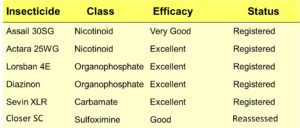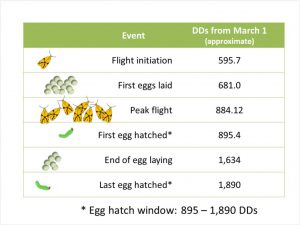ACGA Winter Meeting Program
Date: Thursday, January 17, 2019
Location: Rutgers EcoComplex, Bordentown, NJ
Agenda:
8:00-8:30 Registration and Coffee
8:30-8:50 Welcoming Remarks– Shawn Cutts, President, ACGA
Treasurer’s Report – Shawn Cutts
8:50-9:10 Cranberry Statistics
Bruce Eklund, National Agricultural Statistics Service, Trenton, NJ
9:10-9:35 What did We Learn from Two Years of Research on Controlling Carolina Redroot?”
Thierry Besancon, Weed Science Extension Specialist, Rutgers University, P.E. Marucci Center, Chatsworth, NJ
9:35-10:00 Cranberry Breeding Update: Pyramiding Genes for Fruit Rot Resistance, Genomics Work, and Fruit Chemistry Evaluations
Jennifer Johnson-Cicalese, P.E. Marucci Center, Chatsworth, NJ and Nicholi Vorsa, Professor, Department of Plant Biology and Pathology, Rutgers University
10:00-10:25 Disease Management Progress 2018
Peter Oudemans, Professor, P.E. Marucci Center for Blueberry & Cranberry Research & Extension, Rutgers University, Chatsworth, NJ
10:25-10:45 Break
10:45-10:55 The Benefits of using Remote Imagery in Cranberry Production
John Potter, Director of Agronomy, Skycision
10:55-11:20 Management of Blunt-nosed Leafhoppers in Cranberries: Lessons Learned from Insecticide Trials
Cesar Rodriguez-Saona, Professor, Department of Entomology, Rutgers University, New Brunswick, NJ; Vera Kyryczenko-Roth, and Robert Holdcraft, P.E. Marucci Center, Chatsworth, NJ
11:20-11:40 Understanding the Effects of False Blossom Disease on Cranberry Chemistry, Blunt-nosed Leafhoppers, and other Insect Herbivores
Nakorn Pradit, Department of Entomology, Rutgers University, New Brunswick, NJ
11:40-12:10 Cranberry Institute – An Update
John Wilson, Cranberry Institute, Carver, MA
12:10-1:00 Lunch
1:00 Adjournment- ACGA Board of Directors Meeting




